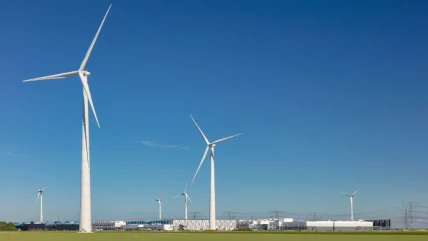
The demand for data centres across Europe is projected to increase significantly, driven by the rise of artificial intelligence (AI) and digital transformation, according to a new report by McKinsey. With power requirements expected to grow from 10 gigawatts (GW) today to approximately 35GW by 2030, this surge highlights the need for substantial investment in infrastructure to meet Europe’s expanding technological needs.
McKinsey’s analysis indicates that Europe’s data centre power consumption could nearly triple, from around 62 terawatt-hours (TWh) currently to over 150 TWh by 2030. Data centres, which presently account for about 2% of total power consumption, are predicted to represent around 5% of Europe’s electricity usage in the next six years. This growth aligns with the increasing adoption of AI technologies, which require higher power density due to the new generation of graphic processing units (GPUs).
As data centres become a crucial part of Europe’s digital landscape, the pressure on the power infrastructure intensifies. Key challenges include limited reliable power sources, sustainability concerns, and insufficient infrastructure for accessing power, particularly in major hubs like Dublin and Frankfurt. In these locations, the time needed to supply power to new facilities can exceed three to five years due to bottlenecks in securing essential equipment and skilled labour.
Data centre expansion driving power consumption growth
To accommodate the surge in data centre demand, the report estimates an investment of $250bn to $300bn will be necessary, excluding costs related to new power generation. A significant portion of this demand is expected to be met with green energy, as data centre operators align their operations with net-zero targets.
To support this growth sustainably, the European Commission has introduced regulations to evaluate data centre sustainability, requiring operators to report key performance indicators (KPIs) by 2024. This initiative is part of broader efforts to integrate low-carbon and renewable energy sources into the continent’s power grid. Hyperscalers and other major operators are increasingly entering into power purchase agreements (PPAs) to secure renewable energy for their facilities.
McKinsey suggests that addressing the power demand from the expanding data centre sector could drive critical investments in Europe’s power grid, bridging gaps between energy generation and transmission. Such efforts are crucial not only for meeting the continent’s digital demands but also for supporting broader electrification and renewable integration initiatives, ensuring Europe’s energy stability and competitiveness in the evolving digital economy.
A separate report by Morgan Stanley projects that the global data centre industry could emit 2.5 billion metric tons of carbon dioxide-equivalent (CO2e) emissions by 2030. Previous research from Morgan Stanley indicates that the rapid growth of generative AI is likely to drive a 70% annual increase in energy demand through 2027, primarily due to the expansion of data centres.







